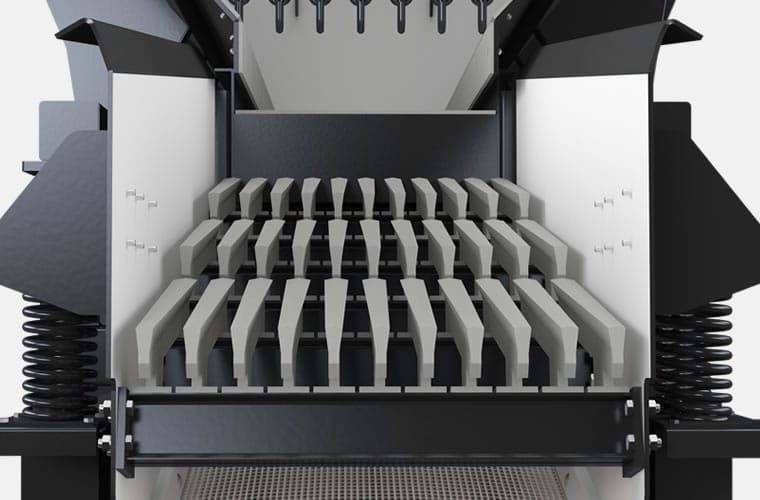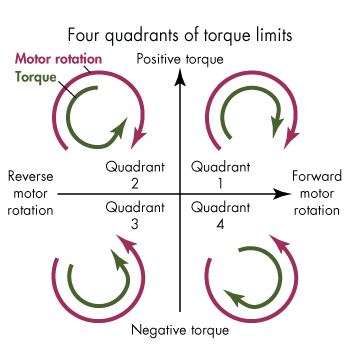Overvoltage Trip on Cyclic Motor Loads
Overview
Cyclic loads such as vibratory tables, feeders, vibration conveyors, and screeners can cause a VFD to trip on Overvoltage (OVt on the keypad). This is due to the load being cyclic. At one point the motor will be in a motoring state and shortly after it will be in a regenerative state. This repeats rapidly dependent on the VFD's frequency reference. Due to the regenerative nature of the application most factory default VFDs will trip on OVt.
 Vibratory Feeder Example
Vibratory Feeder ExampleVFD Solutions
In many cases it is possible to "program around" the regenerative condition. This can be accomplished in a number of different ways covered in further detail below. In some cases a combination of a few of these functions covered may be required.
1. Adjusting Torque Limits
Adjusting the VFDs torque limits should be setup initially while commissioning any VFD with a cyclic load. Referring to Figure 1 below, regen occurs when motor rotation rotates one direction and the torque is opposite. This is also sometimes called an overhauled load. LS Electric industrial VFDs, such as the iS7, S100, and G100 all allow the user to adjust toque limits per the application requirements.
 Figure 1
Figure 1Initial Suggested Parameter Settings:
- DRV09=v/f *Set to Sensorless-2 (we need to temporarily change this in order to access our torque limits)
- CON55=180% *Set to 0%
- CON57=180% *Set to 0%
- DRV09=Set back to v/f
The above settings are essentially telling the VFD to not regulate the torque when a regenerative condition occurs. In many cases these parameters will eliminate an OVt, (Over Voltage Trip).
2. Adjusting Acceleration Time
After setting the above parameters it may sometimes be required to decrease the acceleration time at DRV03. Shorten the acceleration time if the VFD has issues starting the load.
3. Torque Boost
In addition to adjusting the acceleration time; if there are any issues at start, such as not enough starting torque, it is recommended to change DRV15=AUTO or Advanced Auto. This sets the VFD to automatic torque boost mode. This mode will automatically regulate the output voltage to the motor based on the load. If enabling the automatic torque boost is too aggressive for the application you may trip on an overload. In that case, set the torque boost back to "Manual."
4. Regen Avoidance Function
All LSE America Drive Models except the M100 feature a drive regeneration prevention function. This function monitors the DC bus level. When the pre-programmed voltage level is reached the VFD will overspeed to try to consume the regenerative energy and thus avoid tripping on OVt.
Parameter Settings:
- Set ADV74=Yes to enable the function.
- Set ADV76=10HZ. This allows the VFD to overspeed up to 10Hz over the maximum frequency.
After setup and during operation you may see the VFD go higher than the set frequency reference. This is normal when the regen avoidance function is active.
5. Dynamic Braking
Lastly, if the above programming suggestions to not work is may be necessary to employ Dynamic Braking. Dynamic Braking redirects regenerative energy that would typically overcharge the DC bus and cause an OVt trip to a resistor. The resistor (sometimes more than one) burns off the energy as heat. Smaller LS VFDs, up to 30HP include a built-in brake chopper. A resistor can be connected directly to the VFD as long as it meets the VFD specifications. Larger, LS VFDs require an external brake chopper to interface with a braking resistor. For assistance with chopper or resistor selection please contact your local rep or LS Electric America Tech Support.